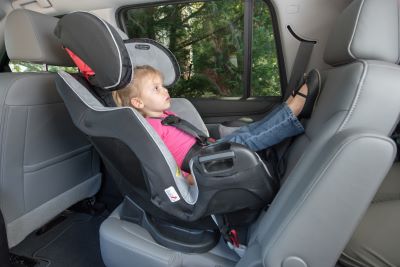The first time I drove somewhere with my baby niece in the car with me, I was terrified. She was only a few months old at the time. After installing her car seat in my car and strapping her in, I sat in the driver’s seat for a few extra moments, worrying that she might not be buckled properly. I checked on her again before starting our drive. November is National Child Safety and Protection Month. It’s the perfect time to reflect on the importance of keeping our little ones safe, especially when they’re in the car. Whether you’re taking a short trip to the grocery store or heading out on a longer journey, there are essential safety measures to consider.

Car Seat Safety
In order to arrive at your destination safely, children must be properly restrained in the car. Car seats are integral to protecting kids during car rides, and choosing the correct seat for your child’s size is vital.
- Infant seats: Designed for newborns and babies, these seats are rear-facing and provide support for developing necks and spines.
- Convertible seats: These seats can transition from rear-facing to forward-facing as your child grows.
- Booster seats: For older children, booster seats help adult seat belts fit properly, reducing the risk of injury.
The best seat is the one that is the right size for your child. Children should stay rear-facing for as long as possible until they reach the height or weight limit for their car seat, whichever comes first. The seat should fit tightly in your car and the base shouldn’t move more than an inch in any direction when you tug on it.
Set Clear Safety Rules in the Car
Teaching kids about car safety is as essential as properly securing them in the car. Start by making seat belt use non-negotiable. Insist that they wear seat belts correctly, with no slack or twists. Encourage children to stay calm, remain seated, and avoid distracting the driver to help keep everyone safe. Make sure to secure loose items like toys, books, or gadgets, as these can become dangerous projectiles in the event of a sudden stop or collision.
Inspect and Maintain Car Seats
Car seats need periodic inspection to ensure they continue to provide the protection your child needs. Over time, buckles, straps, and seat padding can wear down, and these should be replaced as needed. Be sure that the seat meets the manufacturer’s safety standards and isn’t expired, as older seats may not comply with current safety guidelines. Also, check for recalls on your car seat model, as manufacturers sometimes update safety standards or identify design flaws that could compromise safety.
Make a habit of adjusting straps as your child grows. Harnesses should be snug enough that you can’t pinch any excess fabric, and the chest clip should sit at armpit level to help keep the straps in place in the event of an impact.
Be Mindful of Car Temperature
Most of us are familiar with the dangers of leaving kids in a hot car, but keep in mind that cold temperatures are dangerous as well. In cold weather, temperatures can drop just as quickly, creating a chilly environment. Always check the back seat before leaving the car to make sure no child is accidentally left behind, and remind caregivers and others who may drive your child to do the same. Consider placing an item you’ll need (e.g., your wallet or phone) in the back seat as a reminder to look before you lock up. This small habit can help prevent tragedy.
Teach Kids Emergency Preparedness
As children grow, it’s helpful to teach them age-appropriate emergency skills. For example, if they’re old enough, show them how to unlock their seatbelt in an emergency. Teach them to stay calm and instruct them on what to do if they become separated from you, especially in unfamiliar locations. Practice what to do in the event of a collision, including how to dial 911 if they’re able. Consider keeping a small emergency kit in the car with basic first-aid supplies, water, and contact information. Older children can learn about the kit’s contents and understand how each item is used, empowering them to take action if necessary.
National Child Safety and Protection Month serves as an important reminder to prioritize our children’s safety, especially in the car. From choosing the right car seat to setting clear safety rules and maintaining a secure environment, there are many ways to protect our little ones during every journey. By staying informed, vigilant, and proactive, we create a safer world for our children and instill good habits that will keep them protected as they grow. Let’s use this month as a starting point to reinforce safety measures and make child safety a priority every day of the year.
Are you interested in learning more about traffic safety?
Are you looking for defensive driving and traffic school courses? Do you want a online driver education course?
Safe2Drive is here to help! We offer convenient online courses for drivers of any age! Visit our website today to learn about the online courses we offer in your state.